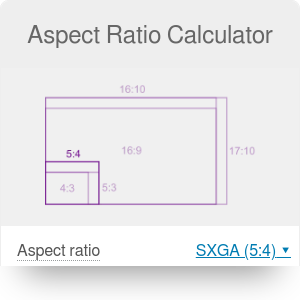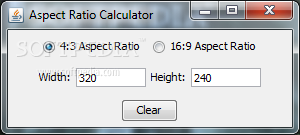
All the sample chains are made with rings of the same AR, even though the overall size of the chain varies dramatically with gauge. If you browse the family portraits for various weaves, you can see the aspect ratio in action. There are so many weaves out there (more every day!) and being able to figure out for yourself what rings to use is really helpful.

The idea is entirely his.)Īspect ratio is a profoundly useful concept.

(My thanks to Jim for this wonderful adaptation of the Ohm’s Law Triangle.
RING ASPECT RATIO CALCULATOR HOW TO
You can dust off your high school algebra, or you can just use this “cheat triangle.” If you stick your thumb over the thing you need to know, whatever is left visible tells you how to find it. You can use that relationship to figure out any of the pieces if you know the other two. The AR will be the same for a perfect Birdcage ring no matter whether that ring is a couple millimeters wide or a couple inches wide. It doesn’t matter what the overall size of the ring is, what’s important is the comparison of ring diameter to wire diameter. The aspect ratio (AR) of a ring is a single number that describes the thickness/thinness of that ring size.Īspect ratio = inner diameter ÷ wire diameterįor the example rings that I used, the AR of the hula-hoop is 5.17 and the AR of the chunky-monkey is 3.41. Now that I’ve convinced you that each weave has its own idea of “perfect” ring size, we need a way to say whether a particular ring is like a hula-hoop, like a chunky-monkey, or somewhere in between.


 0 kommentar(er)
0 kommentar(er)
